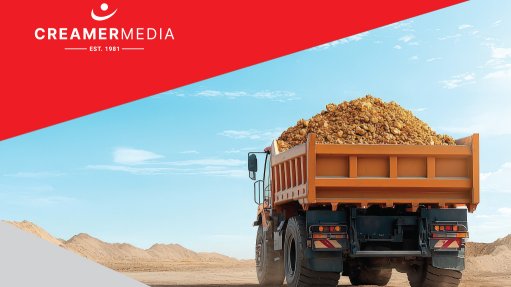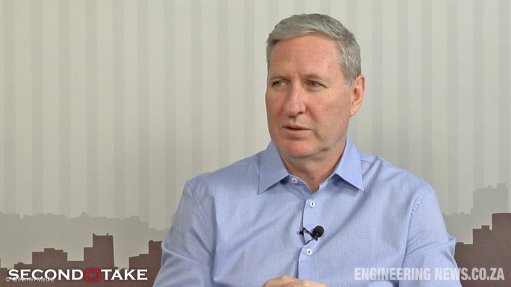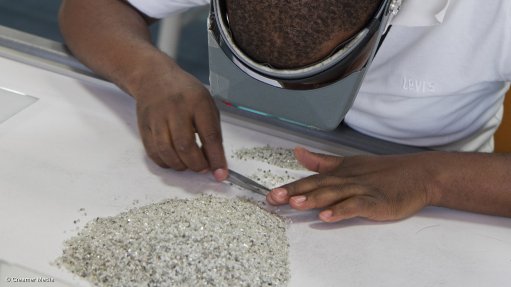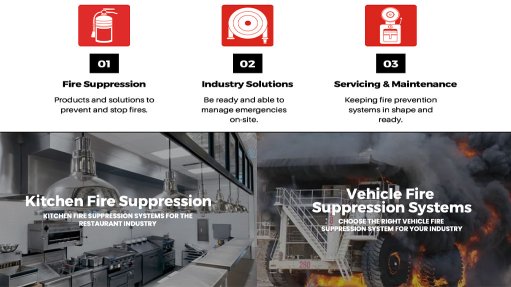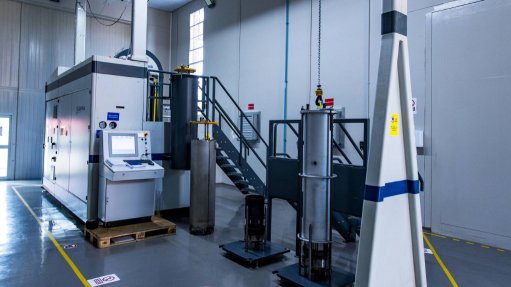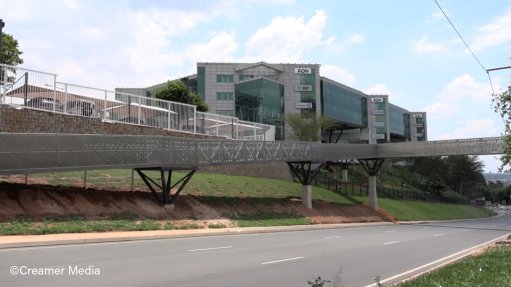Crude Awakening the journey of crude: from ground to compound
This article has been supplied.
By: Rivendren Wayne Moodley: diagnostician, WearCheck
( Virtual Showroom ) Imagine, if you will, a humble, dark liquid pulled from deep within the Earth, mysterious, dense, and seemingly simple. Yet, in the right hands, this “black gold” holds the power to fuel your car, light up cities, and shape the products that make modern life possible. It may look like just a murky substance, but within it lies the potential for magic.
This is where science meets alchemy, and engineering takes on the role of a wizard, transforming crude oil into petrol, jet fuel, and the very materials that power our world. Refining crude oil is not just a process; it’s a carefully orchestrated mystical journey, an intricate dance of heat, pressure, and precision that separates the raw from the refined.
Ready to unravel the secrets behind this modern-day sorcery? Let’s take a deep dive into the fascinating transformation of crude oil into the everyday treasures upon which we all depend.
THE BIRTH OF CRUDE OIL: FROM THE DEPTHS OF TIME
Imagine a time millions of years ago, long before humans walked the Earth. Beneath the ancient seas, tiny marine creatures like plankton, algae and other microorganisms lived and thrived. These creatures, small and seemingly insignificant, lived their brief lives and sank to the ocean floor when they died. As the layers of sediment buried their remnants, the Earth’s dynamic forces - heat, pressure, time and the absence of oxygen - caused the organic material to undergo a slow, chemical transformation creating something far more valuable than anyone could have imagined: crude oil, rich in hydrocarbons (molecules made up of hydrogen and carbon.)
It’s a common myth that crude oil originates from dinosaurs, but this idea is more fantasy than fact. The true source of crude oil lies in the microscopic organisms that lived and died long before T.rex roamed the planet.
Crude oil is the product of millions of years of organic decomposition. It’s not just fossilised goo; it’s a unique blend of hydrocarbons formed from the remains of tiny marine organisms, transformed by the relentless forces of nature into the dark, dense liquid on which we depend heavily today.
MOLECULAR MAGIC: UNPACKING THE CHEMISTRY BEHIND CRUDE OIL
Now, let’s take a closer look at what makes up crude oil. If crude oil were a recipe, the ingredients would be hydrocarbons, with carbon and hydrogen as the main components. But these hydrocarbons come in many forms and sizes, each with its own unique properties. These can be divided into two main categories: alkanes and aromatics.
Alkanes, or paraffins, are simple, straight-chain or branched molecules. These are the lighter hydrocarbons, and they give crude oil its more fluid and volatile qualities. Think of them as the quick movers of the bunch. Petrol, for instance, is made from short-chain alkanes, which burn easily and give your car the fuel it needs to hit the road.
On the other hand, aromatics are more complex, ring-shaped molecules. They’re heavier and less volatile than alkanes and are responsible for some of the thicker components of crude oil, like diesel or even asphalt. The diversity of hydrocarbons found in crude oil is what makes it so valuable and versatile. Depending on the ratio of light and heavy molecules, oil can be refined into everything from jet fuel to heating oil to the plastic in your smartphone case.
So, crude oil isn’t just one thing, it’s a complex blend of molecules that, when properly refined, can be transformed into a multitude of products. It is chemistry in action, and a carefully crafted recipe for success.
DRILLING FOR BLACK GOLD: THE EXTRACTION PROCESS
Extracting crude oil is a complex and technical process that begins with locating oil deposits deep beneath the Earth’s surface. Geologists survey potential areas, and if oil is detected, drilling operations commence.
To reach the oil, wells are drilled into the Earth’s crust, aiming for underground reservoirs where the oil is trapped in porous rock layers. Drilling rigs – large, towering structures - are used to penetrate thousands of metres of rock. In some cases, drilling can reach depths of up to 12 kilometres (equivalent to stacking two Mount Kilimanjaro peaks on top of one other).
Once the reservoir is accessed, bringing the oil to the surface is not a straightforward task. Oil does not always flow freely; pressure within the reservoir helps push the oil up, but additional methods like pumps, water, or gas injection may be needed. Hydraulic fracturing (fracking) may also be employed, where water, sand, and chemicals are injected into the rock to fracture it and release trapped oil.
This process is highly technical, requiring precision and the right equipment to extract the oil safely and efficiently.
A JOURNEY FROM DEEP SLATE TO THE REFINERY’S GATE
Once the oil is extracted, it is time to get this precious commodity to the refinery, where it will be transformed into useable products. To do this, we rely on pipelines - massive underground highways designed to carry oil from the well to the refinery. The crude oil travels through a vast network of steel pipes, winding its way through forests, cities, and even under rivers.
Pipelines are a marvel of engineering, built to withstand incredible pressure and ensure that oil moves smoothly and safely from one location to the next. Some pipelines stretch for thousands of kilometres, transporting oil across countries or even continents.
We also rely on tankers to ship the oil across oceans. Trains and trucks transport it over land.
No matter the method, the goal remains the same: get the crude oil to the refinery, where it will undergo a dramatic transformation.
From ancient seas to underground reservoirs, from drilling rigs to pipelines, and finally, to the refinery, the journey of crude oil is a long and complex one.
It is a product of Earth’s ancient chemistry, transformed by human ingenuity and advanced technology. While crude oil may seem like a simple substance, its creation, extraction, and refinement are anything but simple.
THE DESALTING RITUAL – PURIFYING THE CRUDE ELIXIR
After its long journey through the pipeline, crude oil finally reaches the refinery, but it’s not quite ready to work its magic just yet. The first step in the refining process is to prepare the crude for its transformation, and this is where the “desalting ritual” begins. Just as a wizard prepares his ingredients before casting a spell, crude oil needs to be cleansed of any unwanted impurities, chief among them being salt.
Crude oil isn’t just a simple mixture of hydrocarbons. Along with all the valuable hydrocarbons, it can carry along unwanted compounds like salts, water, and even traces of metals. If left unchecked, these impurities can cause corrosion in the refinery equipment or create unwanted by-products that make refining more difficult.
This is where desalting comes into play. The oil is first mixed with a small amount of water, creating an emulsion - a “salty brew” of sorts. The next step in the magic is applying an electric field through a device known as a desalter, which induces a process called electrostatic coalescence. The electric field helps the water droplets attach themselves to the impurities, making them easier to separate from the oil.
Once the water and salt have been separated, the oil is now “purified” enough to continue its journey. The crude oil is still cold from its long journey through the pipeline, and it needs a little boost before it can be further refined.
PREHEATING THE ELIXIR
After the oil has been purified, it’s time to prepare it for refining. Just like preheating an oven before baking, crude oil needs to be warmed up to flow smoothly through the refinery. Cold, thick oil won’t separate properly into useful fractions, so heating is essential.
The preheating process involves passing the oil through heat exchangers, which transfer heat from hot, already-refined oil to bring the crude oil to the optimal temperature, typically between 120°C and 175°C. This reduces the oil’s viscosity, allowing it to flow easily through the refinery units without overheating.
Heat exchangers play a key role by transferring heat efficiently between different oil streams without mixing them. This process leverages residual heat from other stages of refining, helping to conserve energy and reduce waste. It’s a precise balance of science and engineering that ensures the crude oil is properly prepared for the next stage of refinement.
By the time the crude oil reaches its next destination, it’s both desalted and preheated, perfectly prepared to enter the distillation column and begin its transformation into valuable fuel and other petrochemical products.
FRACTIONAL DISTILLATION – THE HEART OF THE REFINERY
Once the crude oil has been purified and preheated, it enters one of the most critical steps in refining: fractional distillation. This is where crude oil begins to reveal its true potential. Think of fractional distillation as the “sorting hat” of the refining process, where different components of crude oil are separated based on their boiling points.
Crude oil is a complex blend of hydrocarbons, ranging from light gases like methane to heavy substances like asphalt. These components have distinct boiling points, which is the key to the distillation process. By applying heat, the crude oil is vaporised, and the vapour is then separated into its individual fractions as they condense at different temperatures.
Here’s how it works: the preheated crude oil enters a distillation column - a tall, vertical structure containing a series of trays or packing materials. The bottom of the column is heated to temperatures between 350°C and 450°C, depending on the crude type and target fraction.
The extreme temperatures from the furnaces cause the crude oil to vaporise. As the vapour enters the fractionating column, it cools down. Each hydrocarbon in the crude oil has a distinct boiling point, leading to condensation at different heights. Lighter fractions, like methane and ethane, condense at the cooler top, while heavier fractions, such as diesel and lubricating oils, condense lower down, where it is warmer.
The column’s trays, featuring small openings, allow the vapour to rise and condense back into liquid form at various levels.
At each tray, a fraction is extracted and sent for further processing. These fractions include:
1. Light gases (methane, ethane, propane) – used for natural gas or petrochemical products.
2. Naphtha – a key feedstock for petrol.
3. Kerosene – used in jet fuel and heating.
4. Diesel – essential for trucks, buses, and machinery.
5. Gas oils – used as feedstocks for more complex processes like cracking.
6. Residuum – the heaviest fraction, used for asphalt and lubricants.
Fractional distillation relies solely on physical properties - no chemical reactions, just the natural tendency of liquids to vaporise and condense at different temperatures. This separation is crucial to producing the vast array of products derived from crude oil.
THE SCIENCE OF SEPARATION
Fractional distillation works because the hydrocarbons in crude oil vary significantly in size and molecular structure. Lighter hydrocarbons consist of smaller molecules, requiring less energy to vaporise. Heavier hydrocarbons have larger, more complex molecules, needing more heat to break the bonds and turn into vapour.
Although the concept may sound simple, distillation is a precise science. The column’s temperature and pressure are carefully controlled to ensure each fraction is separated at the right time and purity. The more refined the process, the better the separation and the higher the quality of the products produced.
Efficiency is key to successful fractional distillation. The design of the column ensures that vapour and liquid continuously mix and interact, enhancing the separation. As vapour rises and cools on each tray, it gradually condenses into liquid, becoming more refined with each step. The result is the breakdown of crude oil into its valuable components in an effective, energy-efficient way.
Techniques such as bubble caps, tray recycling, and runoff channels play a crucial role in minimising fraction mixing. Bubble caps create a controlled flow of vapour and liquid, ensuring that lighter fractions rise and heavier ones fall efficiently. Tray recycling directs some liquid from higher trays back to lower ones, allowing heavier components more time to condense. Runoff channels help manage liquid flow, preventing excessive mixing. Together, these elements ensure that each tray maintains a clear separation, optimising the overall distillation process.
Once the fractions are separated, many will undergo further refining, such as cracking and reforming, to transform them into even more valuable petrochemical products.
CRACKING DOWN THE CARBON BACKBONE
Cracking is a vital refining process that involves breaking down large, complex hydrocarbon molecules into smaller, more valuable ones. It’s an essential step for turning heavy, less-valuable fractions of crude oil into lighter, more marketable products. In essence, cracking is about using heat, pressure, and sometimes catalysts, to convert heavy oils into useful fuels such as petrol, diesel, and other useful derivitives.
There are several types of cracking methods, each with its own approach to achieving this molecular breakdown. The most common methods are thermal cracking, catalytic cracking, and hydrocracking.
THERMAL CRACKING
Thermal cracking is the simplest and earliest form of cracking. This method relies solely on high temperatures (typically between 480°C and 600°C) and sometimes pressure, to break down large hydrocarbon molecules. The process involves heating heavy fractions of crude oil, such as gas oils or vacuum distillation residues, to high temperatures in the absence of catalysts. At these elevated temperatures, the long-chain hydrocarbons undergo thermal decomposition, resulting in smaller molecules, such as petrol, diesel, and lighter hydrocarbons.
While thermal cracking is effective in producing useful petrochecmical products, it requires significant energy input and often leads to the formation of undesirable byproducts, such as coke - an undesirable carbon residue .
CATALYTIC CRACKING
Catalytic cracking improves upon thermal cracking by introducing a catalyst - usually a zeolite-based catalyst - to speed up the chemical reactions. In this process, the oil is heated to around 475°C and passed over the catalyst, which facilitates the breaking of long hydrocarbon chains at lower temperatures compared to thermal cracking. The catalyst’s role is to lower the activation energy required for cracking, making the process more efficient and less energy intensive.
Catalytic cracking produces high-octane petrol, as well as valuable petrochemical derivatives such as propane, butane, and light olefins, which are essential feedstocks for petrochemical production. This method is highly efficient, as it results in more refined products with better yields than thermal cracking.
HYDROCRACKING
Hydrocracking is a more advanced form of cracking that combines both heat and hydrogen to break down heavy oil fractions. In this process, the oil is treated with hydrogen under high pressure and temperatures typically ranging from 350°C to 450°C. The presence of hydrogen prevents the formation of coke and other undesirable byproducts, while also saturating the hydrocarbon molecules, which improves the quality of the resulting products.
Hydrocracking is particularly useful for producing high-quality fuels, such as jet fuel and ultra-low-sulphur diesel, by breaking down heavier fractions like heavy gas oils into lighter, more valuable products. The process also enhances the hydrogen content of the final products, making them cleaner and more environmentally friendly.
FLUID CATALYTIC CRACKING (FCC)
Fluid Catalytic Cracking (FCC) is another specialised catalytic cracking process. In FCC, the oil is passed through a fluidised bed of catalyst particles, which are suspended in hot gases. This allows for continuous processing, as the catalyst particles are recycled within the system. FCC operates at slightly higher temperatures (around 500°C to 550°C) and is typically used to process heavier feedstocks, such as vacuum gas oils and residual oils.
The FCC process is particularly effective at producing high-octane petrol and light gases, making it a key component of refining operations aimed at optimising petrol yields. It also provides valuable petrochemical feedstocks such as propylene and butylene.
Cracking is an essential refining process that transforms heavy, less valuable fractions of crude oil into lighter, more valuable products, such as petrol, diesel, and jet fuel. Whether through thermal cracking, catalytic cracking, or hydrocracking, the goal remains the same - to break down complex hydrocarbons into usable fuels and petrochemical products.
Each cracking method - whether using heat alone or with the assistance of catalysts - offers its own benefits in terms of efficiency, product yield, and energy consumption, ultimately playing a crucial role in the global energy and petrochemical markets.
COKING: TRANSFORMING HEAVY CRUDE INTO CARBON PRECISION
Coking is the process where the heaviest fractions of crude oil, the ones that refuse to cooperate in other refining processes, are forced to undergo a transformation into something useful. Coking is all about cracking the heaviest hydrocarbons in crude oil into lighter, more useful products, and producing a solid carbon byproduct known as petroleum coke, which has a range of industrial applications, including the production of electrodes for aluminium manufacturing. It is also used as a fuel source for power plants. The two main types of coking processes are delayed and fluidised bed coking.
DELAYED COKING: THE TORTOISE IN THE FABLE
Delayed coking is a slow and controlled process that transforms heavy crude oil into valuable petrochemical products. The heaviest fractions of crude, or “residuum,” are heated to 480°C to 510°C in a Coker, where thermal decomposition occurs. Rather than a rapid reaction, the oil cracks slowly into smaller, useful molecules such as diesel, petrol, and gas oils. What doesn’t crack turns into coke, a solid carbon byproduct that cannot be refined further.
The “delayed” aspect of delayed coking refers to the controlled cracking process that happens gradually over time within the drum, rather than immediately. This results in a mix of light distillates and petroleum coke. Once the Coker drum is full, the cracked product is cooled and separated, with the coke being removed for other uses, while the lighter oils continue to be refined.
Delayed coking is popular, because it handles large volumes of heavy crude fractions efficiently and is relatively simple, requiring only Coker drums. However, the process takes time, which is why it’s called “delayed.”
FLUIDISED BED COKING: THE FAST AND FURIOUS CRACKING
On the other hand, Fluidised Bed Coking is a bit of a high-speed, high-efficiency operation. This process uses a fluidised bed reactor, a kind of cracking equipment that’s a bit like a giant air fryer. Oil is pumped through a bed of solid particles, usually catalyst material, and the intense heat quickly cracks the heavy hydrocarbons.
The oil is preheated and then pumped into a large reactor that contains a fluidised bed of finely powdered coke particles. As hot gases are pumped through the reactor, they cause the coke particles to move around like a fluid. These particles play a crucial role, as they aid in cracking the heavy hydrocarbons into lighter products and coke.
The key to fluidised bed coking is its ability to operate at a higher throughput and with greater efficiency than delayed coking. Since the heat is transferred directly through the fluidised particles, the process is much faster, and the heavy hydrocarbons can be cracked more quickly. The process can be continuously operated, with coke being removed regularly to maintain the fluidised state.
Fluidised bed coking tends to be used in refineries that require a more continuous process, as opposed to the batch-oriented delayed coking method. Its speed makes it ideal for cracking smaller quantities of oil more efficiently, without the need for a long build-up of coke in a drum.
TREATING: REFORMING THE FRACTIONS
Once we’ve cracked and coked the oil into usable fractions, it’s time to make sure everything is clean and free of impurities. Enter the world of treating, the process of removing unwanted materials like sulphur, nitrogen, and heavy metals from the crude oil fractions to ensure we end up with clean, usable products.
One of the key processes in treating is hydrotreating, which involves mixing the oil fractions with hydrogen under high pressure and temperature in the presence of a catalyst. The purpose? To remove impurities like sulphur and nitrogen compounds. Hydrotreating is particularly important for producing cleaner fuels like diesel and jet fuel, which must meet strict environmental standards.
• Hydrodesulphurisation (HDS) is a widely used hydrotreating process that employs hydrogen and a catalyst to remove sulphur compounds from oil fractions. The hydrogen breaks and replaces sulphur bonds, effectively eliminating sulphur and producing cleaner, low-sulphur fuels for environmental compliance.
• Hydrodenitrogenation (HDN) is a process that uses hydrogen to remove nitrogen compounds from oil fractions. The hydrogen reacts with nitrogen, converting it into ammonia (NH₃), which is then removed. This process improves the stability of the oil and reduces the formation of harmful emissions during combustion.
Treating is the polishing stage of the refining process, where the various fractions are cleaned up, ensuring that the cleaner products meet the strict standards for modern environmental conservation.
BLENDING: WHERE IT ALL COMES TOGETHER
At this stage, after all the cracking, coking, and treating, we’ve got a series of refined fractions, some of which are lighter, some heavier, some cleaner than others. But what happens when we need to create a specific product, like petrol, with the exact specifications for an engine? Enter blending, the final step in the refining process, where different fractions are mixed together to create the perfect combination.
Blending is like crafting the perfect cocktail: it’s about finding the right balance of different components to meet the desired specifications. For instance, petrol needs to have a certain octane rating. If the blend has too many light hydrocarbons, it might burn too quickly. Too many heavy hydrocarbons, and it could be sluggish or inefficient. The solution? Blending the right fractions in precise amounts to hit that sweet spot.
The key to successful blending is understanding the boiling points and chemical composition of the different fractions. By mixing lighter fractions like naphtha with heavier ones like gas oils, refineries can create products with the right volatility, energy content, and combustion properties.
Blending doesn’t just apply to petrol. It’s also used for other products like jet fuel, diesel, and lubricants, where each product has its own set of specifications. It’s a balancing act that requires a deep understanding of the chemical properties of the various oil fractions.
THE END OF THE ROAD
Once all processes have done their work, the crude oil has been transformed from a raw, unrefined product into a whole range of valuable, usable fuels and chemicals. It’s been broken down, purified, and carefully mixed to create the products on which we rely for everything from transportation to manufacturing. The refined, final products are now stored in barrels or end-product containers, finally ready to serve their intended function.
CONCLUSION
From crude oil’s unrefined beginnings to the highly specialised products that fuel our world, the refining process is nothing short of an industrial marvel, an extraordinary feat of science and engineering. Each step plays a vital role in transforming something seemingly simple into the driving force of modern society.
So, the next time you fill up your gas tank, remember - you’re not just pumping fuel, you’re tapping into a process that spans millions of years and an ongoing journey that fuels our modern world, so take a moment to appreciate the unseen wonders that make it all possible.
Article Enquiry
Email Article
Save Article
Feedback
To advertise email advertising@creamermedia.co.za or click here
Comments
Press Office
Announcements
What's On
Subscribe to improve your user experience...
Option 1 (equivalent of R125 a month):
Receive a weekly copy of Creamer Media's Engineering News & Mining Weekly magazine
(print copy for those in South Africa and e-magazine for those outside of South Africa)
Receive daily email newsletters
Access to full search results
Access archive of magazine back copies
Access to Projects in Progress
Access to ONE Research Report of your choice in PDF format
Option 2 (equivalent of R375 a month):
All benefits from Option 1
PLUS
Access to Creamer Media's Research Channel Africa for ALL Research Reports, in PDF format, on various industrial and mining sectors
including Electricity; Water; Energy Transition; Hydrogen; Roads, Rail and Ports; Coal; Gold; Platinum; Battery Metals; etc.
Already a subscriber?
Forgotten your password?
Receive weekly copy of Creamer Media's Engineering News & Mining Weekly magazine (print copy for those in South Africa and e-magazine for those outside of South Africa)
➕
Recieve daily email newsletters
➕
Access to full search results
➕
Access archive of magazine back copies
➕
Access to Projects in Progress
➕
Access to ONE Research Report of your choice in PDF format
RESEARCH CHANNEL AFRICA
R4500 (equivalent of R375 a month)
SUBSCRIBEAll benefits from Option 1
➕
Access to Creamer Media's Research Channel Africa for ALL Research Reports on various industrial and mining sectors, in PDF format, including on:
Electricity
➕
Water
➕
Energy Transition
➕
Hydrogen
➕
Roads, Rail and Ports
➕
Coal
➕
Gold
➕
Platinum
➕
Battery Metals
➕
etc.
Receive all benefits from Option 1 or Option 2 delivered to numerous people at your company
➕
Multiple User names and Passwords for simultaneous log-ins
➕
Intranet integration access to all in your organisation




